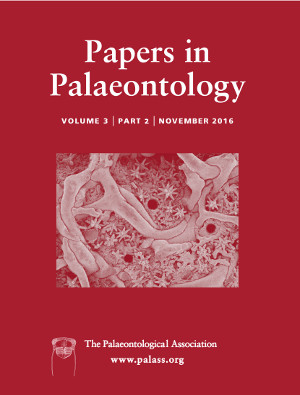Reg. Charity No. 1168330

The Upper Jurassic of the Lusitanian Basin has yielded an important fossil record of sauropods, but little information is available about the tooth morphotypes represented in this region. A large sample of teeth, both unpublished and published, is described and discussed here. Four main tooth morphologies are identified: spatulate, heart‐shaped, pencil‐shaped, and compressed cone‐chisel‐shaped. Heart‐shaped teeth are considered to be exclusive to a non‐neosauropod eusauropod, tentatively referred to Turiasauria. The spatulate teeth can be attributed to members of the Macronaria; they have a complex cingulum, more than one lingual facet and a labial ridge. The compressed cone‐chisel‐shaped teeth are also attributed to macronarians and the presence of an axially twisted apex through an arc of 30°–45° suggests putative affinities with Europasaurus and basal titanosauriforms. The variability observed in the overall morphology and wrinkling pattern of the compressed cone‐chisel‐shaped teeth may be due to factors related to the tooth position or to the ontogeny of individuals. Finally, pencil‐shaped teeth with high slenderness index values, oval and apically located wear facets, subcylindrical crowns and lacking carinae, are tentatively assigned to Diplodocoidea. The diversity of tooth morphologies is in accordance with the known palaeobiodiversity of the Portuguese Late Jurassic sauropod fauna, which is composed of non‐neosauropod eusauropods (turiasaurs), diplodocoids (diplodocids) and macronarians (camarasaurids and probably brachiosaurids). The Late Jurassic sauropod fossil record of the Iberian Peninsula presents the broadest tooth morphospace range in the world from this period, suggesting a wide niche partition for sauropods, and corresponding high taxonomic diversity.